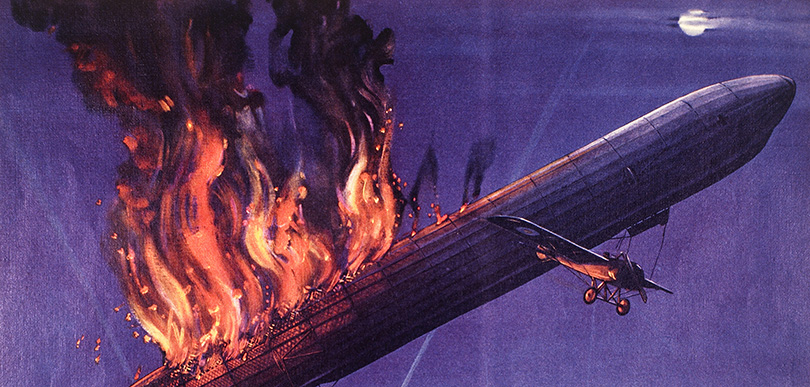
Battles of World War I: Land, Sea and Air Engagements
World War I was the first conflict on a global scale. It witnessed some of the worst battles in history and, with over 37 million casualties, will be remembered as one of the bloodiest wars. Explore an overview of the major European battles fought between 1914 and 1918.
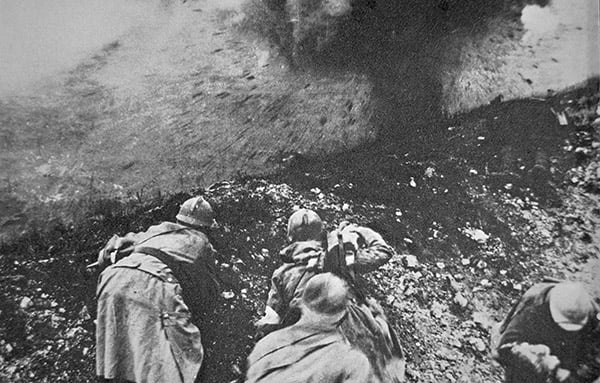
French infantry under fire from German artillery during the Battle of Verdun, 1916, Peter Newark Military Pictures
Land Engagements: Confrontations on the Western Front
Many of the major battles took place on the Western Front. The Battle of the Marne was fought soon after the outbreak of war in September 1914. The German advance into France was prevented and, shortly after, the first trenches between the Allied and Central Powers were built. They eventually stretched over 400 miles from the Swiss border to the North Sea.
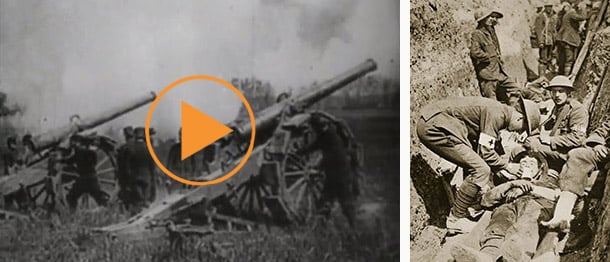
Left: The Battle of the Marne, 5th September, 1914. / Bridgeman Images
Right: Red Cross men in the trenches, 1916 / The Stapleton Collection / Bridgeman Images
The Battle of the Somme is considered one of the bloodiest battles of World War I. More than 1,000,000 men were wounded or killed between July and November 1916. Around the same time – from February to December 1916 – the Battle of Verdun took place. It was one of the longest battles of the Great War. Over the course of ten months the French held back a major German offensive.
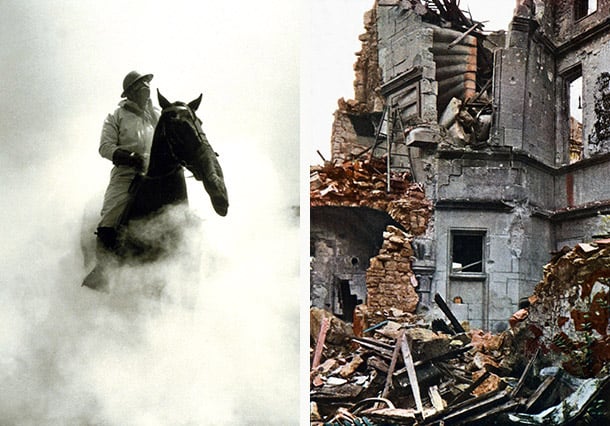
Left: Soldier and Horse wearing a gas mask during the Battle of Verdun, 1916, French Photographer / Private Collection / Bridgeman Images
Right: The heavily damaged Princerie, Verdun, September 1916, Jules Gervais-Courtellemont (1863-1931) / © Galerie Bilderwelt / Bridgeman Images
Naval Warfare
During World War I the battles at sea were mainly fought between the British Royal Navy and the Imperial German Navy. Both of their fleets clashed in the Battle of Jutland in 1916. Today this battle is considered the major naval battle of World War I.
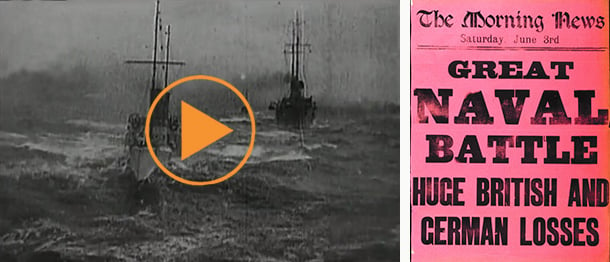
Left: WWI naval combat, sinking of the Lusitania, Battle of Jutland.
Right: Front page of ‘The Morning News’ / © Royal Naval Museum, Portsmouth
German U-boats targeted merchant ships to starve the Allies of supplies from North America. With the sinking of the RMS Lusitania, however, they prompted the USA to join the war in 1917, which sealed Germany’s fate.
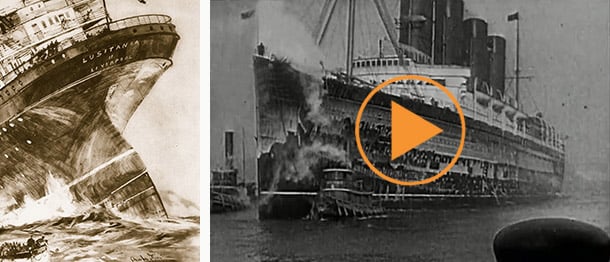
Left:Lusitania, English School / Private Collection / The Stapleton Collection
Right: WWI naval combat, sinking of the Lusitania, Battle of Jutland. / Bridgeman Images
War in the Skies
Before World War I broke out in 1914, wars were fought on land or at sea. Air combat was new and not used on a large scale as the first planes only took off 11 years before the start of the Great War. Used for reconnaissance, planes, balloons and zeppelins became increasingly more significant. Their use would change military tactics forever.
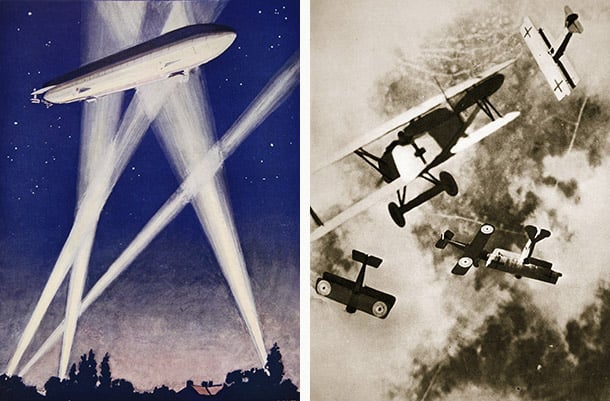
Left: Zeppelin Raider, 1915/16, English School / Private Collection / The Stapleton Collection
Right: Dogfight, English Photographer / Private Collection / The Stapleton Collection
Timeline: Major Battles of World War I
See below dates of major battles during World War I, linking through to images and clips in the Bridgeman archive.
1914
- 23 August – Battle of Mons
- 26-30 August – Battle of Tannenberg
- 26 August – Battle of Le Cateau
- 28 August – Battle of Heligoland Bight
- 5 September – First Battle of the Marne
- 9 September – First Battle of Masurian Lakes
- 13-28 September – First Battle of the Aisne
- 16 October – Battle of the Yser
- 19 October – First Battle of Ypres
- 8 December – Battle of the Falkland Islands
1915
- 19 February – January 1916 – Battle for Gallipoli
- 21 April – 25 May – Second Battle of Ypres
- 25 September – 18 October – Battle of Loos
1916
- 21 February – 18 December – Battle of Verdun
- 31 May – Battle of Jutland
- 1 July – 13 November – Battle of the Somme
1917
- 16 April – 15 May – Second Battle of the Aisne
- 31 July – 6 November – Third Battle of Ypres/Battle of Passchendaele
- 20 November – 7 December – Battle of Cambrai
1918
- 15-18 July – Second Battle of the Marne
- 8-11 August – Battle of Amiens
Find out more
Read more about World War I battles in “Australia’s WWI Heroes on Film“.
See more footage of major World War I battles in the Bridgeman archive.
All images in this article are sourced from www.bridgemanimages.com. Contact the Bridgeman sales team (uksales@bridgemanimages.com) for more information regarding licensing, reproduction and copyright issues.
Save
Save
Save
